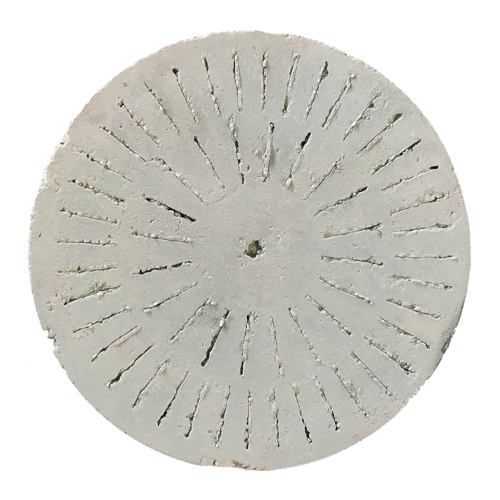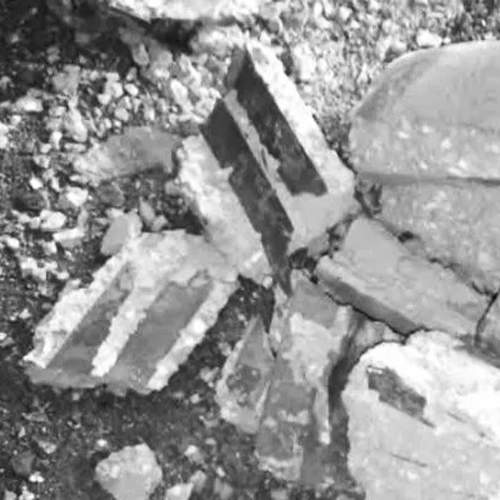- 21
- Oct
Analysis of the causes of accidents in the position of the ladle air-permeable brick core
Analysis of the causes of accidents in the position of the ladle air-permeable brick core
Breathable bricks play an important role in the ladle refining process. It can stir the molten steel through bottom blowing gas, can quickly disperse the melting of deoxidizers, desulfurizers, etc., and can discharge gas and non-metallic inclusions in the scrap steel, and has a uniform The temperature and composition of molten steel enhance the quality of molten steel, thereby achieving the ultimate goal of refining. As a refractory product, ventilated bricks are composed of ventilated brick cores and ventilated seat bricks. Among them, the ventilated brick core plays a major role and consumes more damage during use. If the use method is not properly grasped, it will hinder normal Production may even cause serious production accidents such as steel breakout.
The first reason is that the brick core is too short. The breathable brick is at the bottom of the ladle and will bear a certain amount of static pressure of the molten steel. When the residual length of the brick core is shortened, the contact area between the brick core and the seat brick will also be reduced, the strength of the brick core itself will be reduced, and cracks may appear under the influence of rapid heat and cold alternation. At this time, when the ventilating brick core is subjected to excessively high hydrostatic pressure of the molten steel, the brick core will be ejected by the molten steel or the molten steel will gradually seep out from the crack position, which will eventually lead to a steel leakage accident. The safety alarm device at the height of about 120~150mm at the bottom of the ventilating brick core can effectively avoid the leakage accident caused by the short ventilating brick. The safety alarm device is a special material that is obviously different from the material appearance and brightness of the ventilating brick in a high temperature environment. .

Figure 1 Slit Breathable Brick
The second reason is the leakage of the fire mud between the ventilating brick core and the seat brick. When the air-permeable brick core is hot-switched on site, a layer of fire mud should be evenly applied to the outside of the brick core, with a thickness of about 2 to 3 mm. The brick core and the inner hole of the seat brick are aligned horizontally according to the operation specification. The fire mud cannot fall off during the installation process. The strength of the fire mud powder is very low at high temperatures. In the case of uneven thickness of the fire mud, the thick side is easily washed away by the molten steel, which reduces the service life of the ventilating brick. At the later stage of use, the molten steel penetrates through the fire mud seam as the channel , It is easy to cause leakage accidents; there is a certain gap on the thin side, and the iron sheet cannot be completely combined with the inner hole of the seat brick. The high temperature atmosphere will gradually oxidize and corrode the iron sheet, and breakout may also occur. Use pad bricks to support and fix the ladle air-permeable brick core. Fire mud should be applied to the front and surrounding of the mat to seal the lower hole of the ventilating brick core. If the fire mud is not full, it cannot play a secondary protective role. The use of underlay bricks will undoubtedly increase the complexity and difficulty of construction, and cause greater disadvantages in the continuous action. Therefore, Ke Chuangxin recommends the overall ventilation brick scheme to avoid the difficult heat switching process and the operation is relatively simple. Moreover, the influence of unfavorable factors caused by improper operation of the fire mud is avoided.
The third reason is the slit steel infiltration. The design of the slit size of the slit air-permeable brick is very important. If the slit size is too small, it cannot meet the requirement of air permeability; if the slit size is too large, the molten steel may penetrate into the slit in a large amount. Once cold steel is formed, the slit will be Blocking, resulting in the undesirable consequences of air-impermeable bricks. As we all know, from the structural point of view, it is impossible for the slit air-permeable brick to not infiltrate steel, and a small amount of infiltration does not affect its blowing. Therefore, it is necessary to design a reasonable number and width of slits. In addition, anti-permeable air bricks can be used. The microporous structure on its surface prevents the entry of molten steel, which can well solve the problem of steel infiltration.

Figure 2 Excessive steel penetration caused by too large slit size
The slit type ventilating brick has the advantages of high thermal strength, thermal shock resistance, erosion resistance and erosion resistance, and has a long service life, high blow-through rate, and good safety; the impermeable ventilating brick is safer than the slit type Higher, less cleaning or even no cleaning, reduces the consumption of the ventilating brick in the hot repair link, and fundamentally improves the service life.
